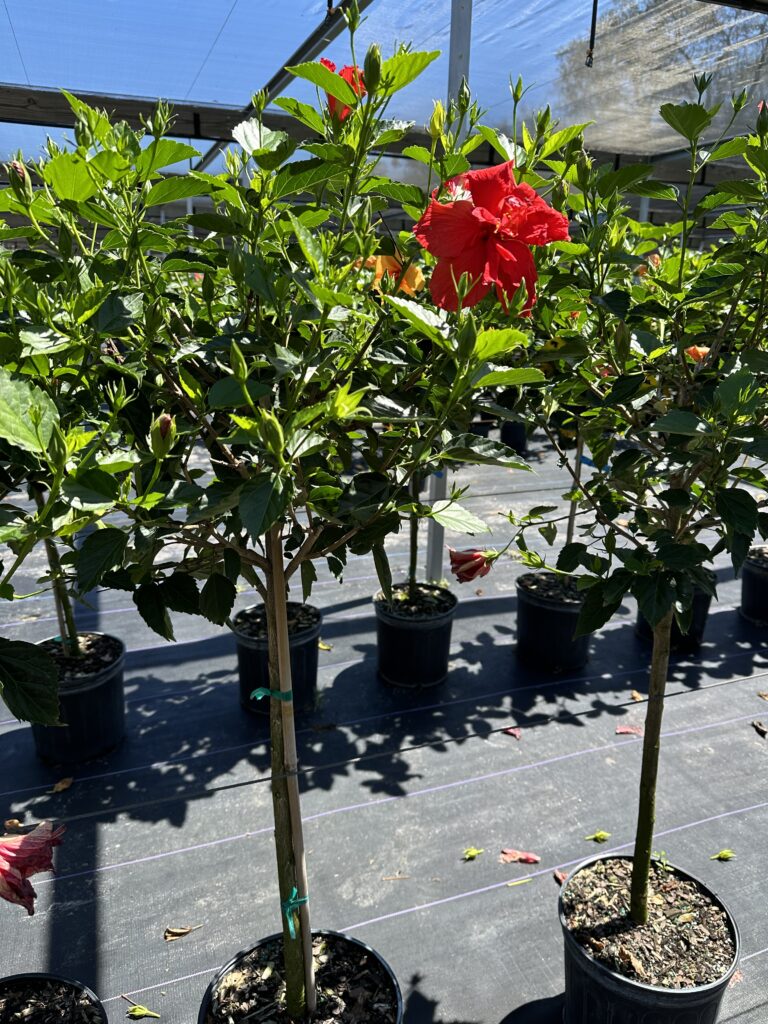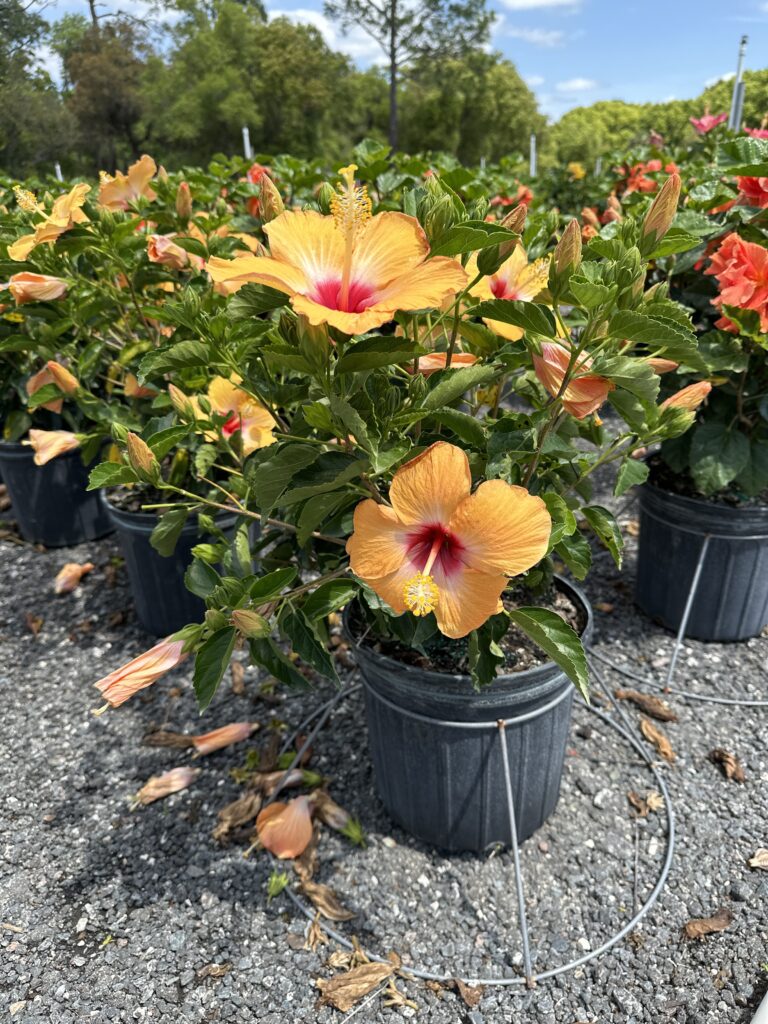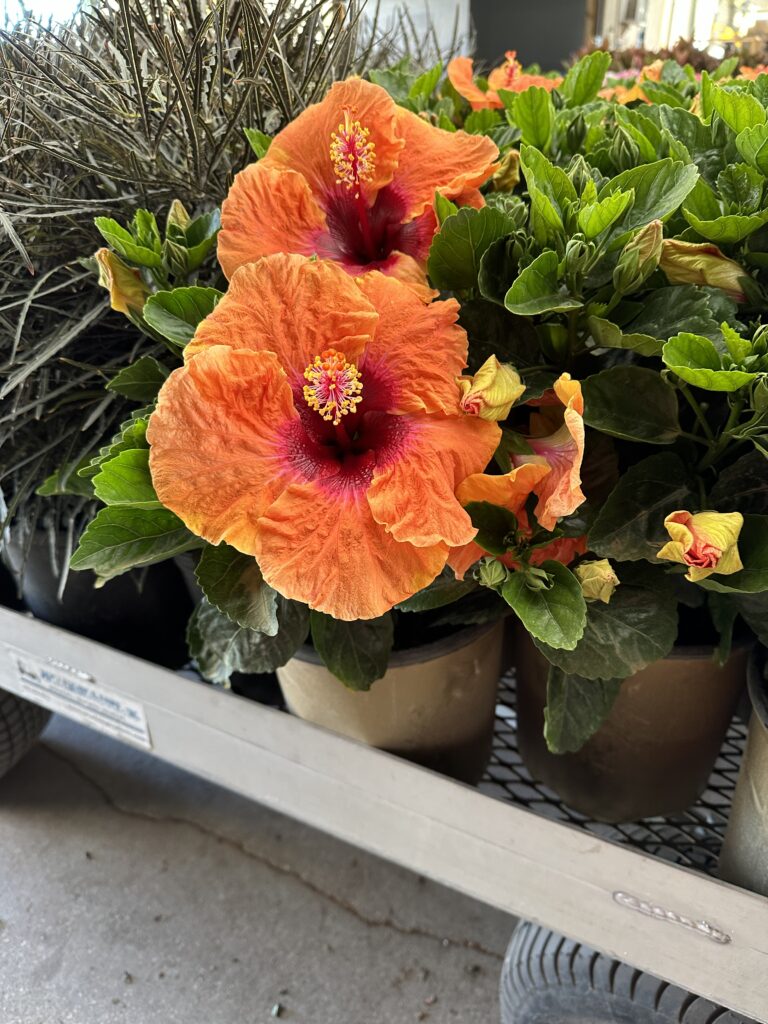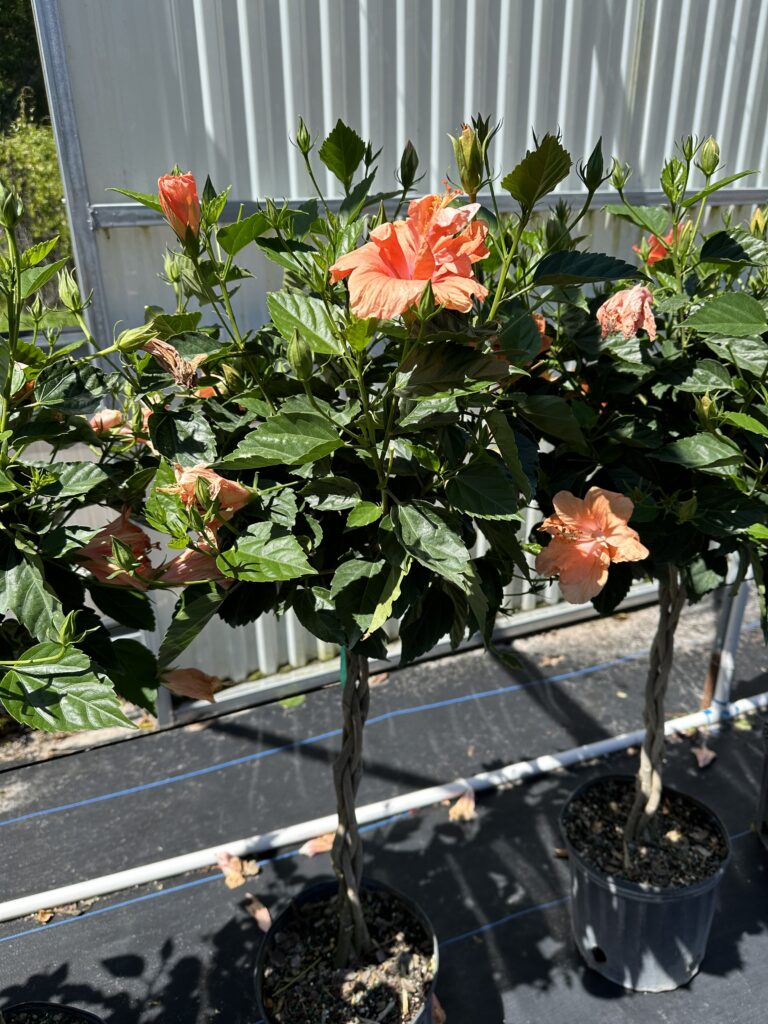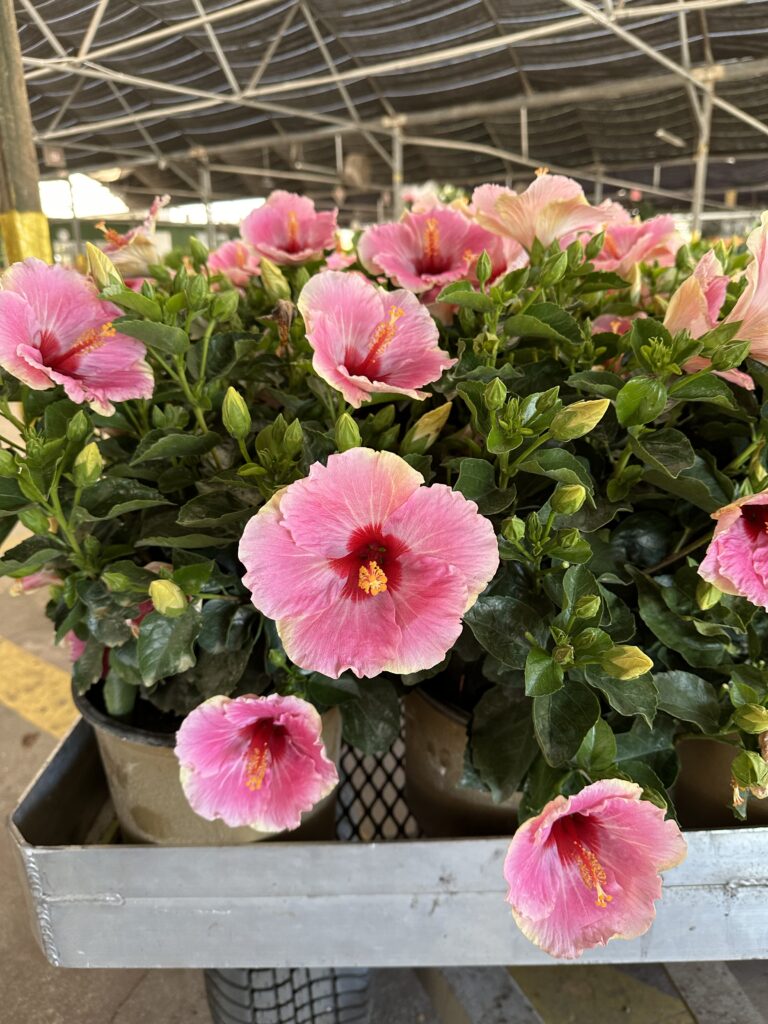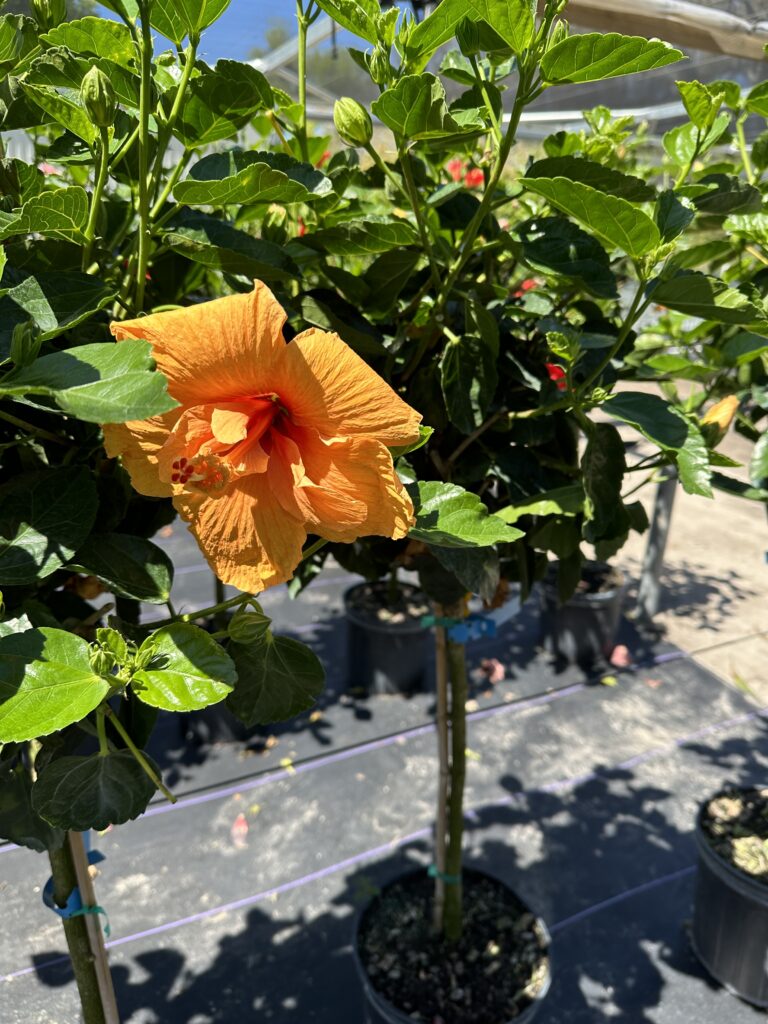Caring for hibiscus plants involves providing them with plenty of sunlight, regular watering to keep the soil consistently moist but not waterlogged, and fertilizing monthly during the growing season with a balanced fertilizer. But that isn’t all to help keep them thriving. We’ve put together a helpful guide to caring for your hibiscus plants.
Temperature
Hibiscus plants generally prefer warm temperatures ranging from 60 to 90 degrees Fahrenheit. They thrive in a tropical or subtropical climate and should be protected from temperatures below 50 degrees Fahrenheit as they are sensitive to cold and frost. Hibiscus plants can be moved indoors during colder seasons or grown in containers that can be brought inside to protect them from chilly temperatures.
Watering
Hibiscus plants require moderate and consistent watering to thrive. It is important to keep the soil consistently moist but not waterlogged, as waterlogged soil can lead to root rot. During the growing season, hibiscus plants should be watered deeply once or twice a week, allowing the top inch of soil to dry out between waterings. In hotter weather or during prolonged dry spells, more frequent watering may be necessary. During the dormant season, reduce watering frequency but be sure not to let the soil completely dry out. Watering in the morning allows the plants to absorb moisture before the heat of the day.
Pruning
Pruning hibiscus plants is an important aspect of their care to promote healthy growth and flowering. Pruning should be done in the spring or early summer before new growth appears. Remove any dead, damaged, or crossing branches to improve airflow and prevent disease. Additionally, cutting back older wood encourages new growth and more prolific flowering. Pruning can also help maintain the shape and size of the plant, whether it is a shrub or tree form hibiscus. Regular deadheading of spent flowers can also promote continuous blooming.
Pests
Hibiscus plants can be susceptible to various pests, including aphids, whiteflies, spider mites, and scale insects. Signs of pest infestation on hibiscus plants include yellowing or distorted leaves, sticky honeydew residue, and the presence of tiny insects on the plant. To control pests, regular inspection of the plant for early detection is vital. Depending on the type of pest, treatment options may include insecticidal soap, neem oil, horticultural oil, or natural predators like ladybugs. It’s essential to address pest infestations promptly to prevent damage and ensure the health of the hibiscus plant.
Light
Hibiscus plants thrive in full sun, meaning they prefer at least 6 to 8 hours of direct sunlight each day. Adequate sunlight is essential for hibiscus to produce abundant flowers and maintain healthy foliage. In less sunny conditions, hibiscus may still grow but might not flower as prolifically. It’s important to provide the plant with sufficient light to promote optimal growth and blooming. Hibiscus plants can also benefit from a consistent light source, so placing them in a location with good sunlight exposure is ideal for their overall health and development.
Soil
Hibiscus plants prefer well-draining, slightly acidic soil that is rich in organic matter. If you’re unsure the pH of your soil, you can have it tested professionally or buy your own at-home kit. A mixture of peat moss, compost, and perlite or sand can help create the ideal growing medium for hibiscus. It’s important to avoid heavy, compacted soils that can lead to waterlogging and root rot. Regularly checking the moisture levels of the soil and ensuring proper drainage can help maintain a healthy growing environment for hibiscus plants. Additionally, periodically feeding the plants with a balanced fertilizer formulated for tropical or flowering plants can provide the necessary nutrients for optimal growth and blooming.
For more information on Hibiscus plant care, or to place an order, call us at (352) 735-8350. We are also open to the public.

